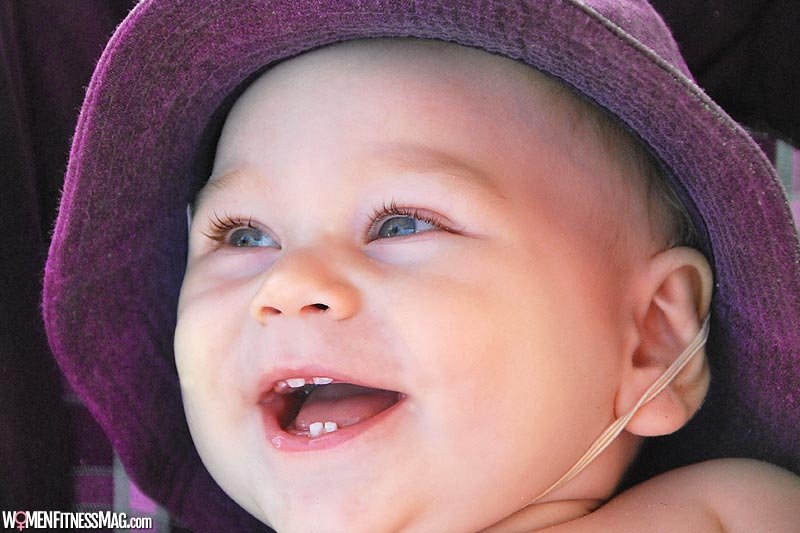What are the Best Methods to Soothe a Teething Baby? As adorable as babies are, they are also a big responsibility. Snapshots of little babies showing off their first teeth are cute and adorable, but behind those photos are a lot of sleepless nights, crying, and general fussiness.
As new parents, you might be excited for this milestone, but not prepared for the chaos it might cause and how it might disrupt the sleep routine of the baby. A teething baby can be a nightmare to handle as the baby is uncomfortable, if not in pain, throughout the day and night. If are looking for a reputable dentist in South Barrington to help your child cope with teething problems, we recommend this one!
So to get ready for teething, it’s important to recognize the symptoms beforehand and not be taken by surprise.
The teething process
Every baby is different, but typically you can expect your baby’s teething to start within the age range of six to thirteen months. In rare cases, the baby might start teething at the age of four months and there is certainly nothing abnormal about it.
The bottom front teeth usually come in first, although it isn’t unheard of for the upper front teeth to precede the bottom teeth. So those four front teeth are the first to arrive, followed by the canines. The eight molars start sprouting after the canines. All the milk teeth (the first set up teeth) start appearing between the baby’s first and third birthday. In short, your baby will be teething for a long time.
Teething is literally a slow eruption of teeth pushing up through the gums. You may not be able to see the sprouted teeth right away, but you will start to feel little bumps on the gums within a week of the teething process. This is the time it hurts the most. Right when the teeth are poking through the gums to make their appearance, the baby is going to start hurting and will become very fussy and irritable.
The symptoms of teething
There are clear signs that indicate that your baby has started teething. Keep a lookout for these symptoms and you will be prepared for what comes next.
The baby will start to drool and gnaw on things from the third or fourth month of the baby’s birth. He will gnaw on anything and everything he can get his cute little hands-on, including his own fingers and yours too. There are two predominant symptoms that are common for all babies while they are teething. There are other symptoms too that seem to be more of a side effect of the teething process, and they may or may not make an appearance.
- Drooling
The first and foremost sign of teething is always a lot of drooling. Again, your baby will drool a lot. Don’t be alarmed by the excessiveness of the drooling. The teething process stimulates the salivary glands of the baby and thus, the resulting drool This is a natural soothing mechanism of the baby in response to the pain and discomfort he feels. - Fussiness
The baby is going to be cranky all the time! So, if you’ve been hoping for some sleep, be prepared to have your hopes dashed. The teething process is really painful for the baby and you’ll know this by his cranky, ongoing irritability. To keep up with the fussy baby’s sleep routine, as parents you can try to alternate your day and night shifts of watching and caring for the baby. - Trouble sleeping
As mentioned, the baby feels a lot of pain and discomfort while teething. Be prepared for a lot of sleepless nights trying to soothe a fussy baby. - Low appetite
The pain might cause the baby to lose his appetite for solid foods. In some instances, the baby might stop eating altogether. You have to make sure that the baby at least eats enough to ensure its proper growth. The baby is at a crucial developing stage and needs to be fed properly to ensure proper growth. Try offering the baby liquid foods. If the baby stops eating completely during the teething process, it is time to see a doctor.
Symptoms that are not directly related to teething
At times, the baby can develop a fever, diarrhea, and vomiting. It is a common mistake for parents to associate these symptoms with teething, but these symptoms have almost no correlation with the teething process.
Teething causes inflammation of the gums, and inflammation in any part of the body causes a slight increase in body temperature. You might see a slight increase in the baby’s body temperature (100⁰F or 37.7 ⁰C), but this is normal and there’s no need for alarm. But anything above that is certainly a worry, and you should consult a doctor right away.
Many babies experience vomiting during teething and at times, diarrhea as well. This happens because your baby is chewing and gnawing at everything he can grab and put in his mouth. This opens up a gateway for bacteria and germs to enter the baby’s stomach, which can cause fever, vomiting, and diarrhea. Make sure that you keep your surroundings clean and disinfect the chewing toys before giving them to your child.
There are many proven ways to soothe a teething baby and make yours and the baby’s lives easier.
5 tricks to soothe your teething baby

- Chewing on something cold
Wet a clean washcloth and seal it in a plastic bag. Let that bag cool in the freezer for some time. When it is sufficiently cold, give it to your baby to gnaw on. This will soothe the inflamed gums of the baby and will ease his pain. - Cold food
Just as we are advised by our dentists to eat ice cream after a painful dental appointment, baby gums also find comfort in eating cold food while teething. Feed your baby chilled applesauce or pureed and chilled fruit. - Gum massage
A gum massage is the most common remedy for calming inflamed gums. Babies have very sensitive gums and the teething process hurts their gums badly. To soothe the pain, you can massage your infant’s gums using your clean finger, a washcloth, or a gum-rubbing finger pad. - Herbal remedies
You can choose to opt for herbal remedies to soothe the teething pain. There are many natural ingredients that are used for soothing inflammations. You can boil rosehips, chamomile, or clove into a tea and chill them. Dip a clean washcloth into the chilled tea and rub it across your baby’s gums. - Teething rings and toys
Gnawing puts pressure on the tiny baby gums and gives them relief. But, gnawing at anything and everything might not be hygienic and some things might also hurt the baby. So, there are toys and rings especially designed for babies to chew on to ease the teething discomfort.There are special BPA-free plastic teething rings that are highly recommended for teething babies. Also, using wooden teething toys is a good alternative as wood is a natural material. While buying teething toys, be careful to not buy silicone liquid-filled toys or toys with a choking hazard.
Conclusion
Teething can be a stressful phase for both babies and parents. But, remember you are not in this alone. Do not hesitate to seek help and ask questions. The above-mentioned soothing remedies will surely help you calm your fussy baby. Since the baby is susceptible to germs during the teething phase, be alert to any abnormal signs and contact the doctor right away If you have any concerns.
Related Videos about What are the Best Methods to Soothe a Teething Baby :
Top 5 Methods to Help Soothe a Teething Infant
Soothing Tips on Teething – First With Kids
How To Help With Teething – Baby Massage Course Part Three | Channel Mum
Teething Remedies for Babies
Tips for Teething – What can you do to ease your Babies Pain?
What are the Best Methods to Soothe a Teething Baby?
home remedies for teething babies, how to soothe a teething baby at night, indian home remedies for teething babies, old time remedies for teething babies, best teething medicine, teething baby symptoms, best thing for teething baby, home remedies for baby teething fever, Methods to Soothe a Teething Baby




